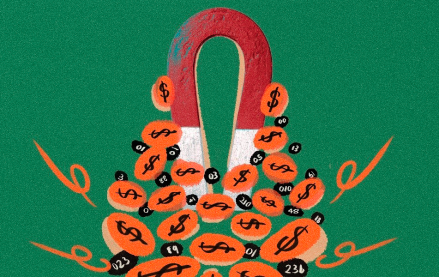
For most people, a subway delay on their morning commute can ruin the rest of their day – causing aggravation, boredom and overall existential frustration.
But for some, captivated by the game they’re playing in the palms of their hands, they’re content in their state of (literal) tunnel vision — gaming their way through a soul-sucking commute and happily immune to the grievances of an outside world.
“Mobile gaming actually gives advertisers really unique opportunity through engagement,” explains Casey Cambell, senior director of advertising at Gameloft. “If you picture somebody passively consuming content versus somebody who’s actively playing a game — especially if you’ve ever had to have a conversation with someone who’s playing a game — their concentration and attention is 100 percent on the media they’re consuming, with very little distraction, if it’s a mobile game.”
But while it may be easy for some marketers to identify the ample opportunity provided by a captive, highly-engaged audience, it means nothing if they don’t understand just who that audience is.
“With the rise of casual and hyper-casual gaming, the mobile game industry is now reaching a large majority of the population at a worldwide scale,” says Edouard Favier, marketing director at mobile game publisher PikPok. “Brands don’t understand the mobile gaming audience very well and still perceive mobile gamers as a stereotype of a young and geeky male teenager.”
According to numerous studies, the vast majority of those who play mobile games do not identify with the term “gamer”, despite several of them playing mobile games every day.
But knowing who these players are is only one piece of the puzzle. It’s crucial to understand when and where they are playing — and by extension, what that means for your brand.
Ad position: web_incontent_pos1
“People typically game when they wake up,” explains Gabrielle Heyman, head of global ad sales at game developer Zynga. “They’ll game before they go to bed, they game in the bathroom, on the subway to work. They game in the airplane or at the airport. They game when they put their kids to bed, they take that ‘mommy time’ and pull out the mobile game.”
“The more sophisticated brands are taking advantage of that,” she continues. “That’s at that amazing frequency, tailoring their message to the right person at the right time, knowing that this is a unique environment throughout a consumers life cycle.”
If and when marketers can understand the value of mobile gaming from a player’s perspective — where, when and how often these players slip into that “tunnel vision” state of concentration, combined with the urge to win or achieve something — they can begin to grasp just how they can best reach that potential customer.
“Rewarded [video] typically means you get something in game, for consuming the advertising,” explains Campbell. “So you get some sort of reward, be it coins or tokens or whatever the currency is when it comes to the game or the application that you’re using. And it’s definitely effective when it’s done right.”
It’s an advertising model that presents a win-win for both advertiser and consumer: not to mention the bonus win that comes with the voluntary choice to consume ad content. “If we make the ad consumption voluntary, for us this means a happier user, of course,” says Campbell. “And then for the advertiser, this actually means a more qualified impression.”
Ad position: web_incontent_pos2
“What we’ve found is that it really creates a positive association for the brand,” he continues. “At Gameloft, our game teams were really quite impressed when we introduced advertising and saw on the forum boards that our community and our users were actually requesting more rewarded advertising. And what other platforms can say that, requesting more ads?”
However, while rewarded video can result in huge returns, marketers should still take care to make sure it’s done right — or else they risk a costly misfire.
“It’s really important to make sure the ads don’t clutter the user interface and distract away from the gaming experience,” Campbell says. “Their attention is really focused on the content, that’s true, and we of course want to make sure that the actual gameplay is never interrupted by some sort of advertising message. We want to have it implemented as natively as possible within the game.”
So when that mobile gamer on their morning commute hits an unexpected delay (and all of the bonus playtime that comes with it), perhaps five free bonus tokens are just the thing they need — courtesy of a well-known brand via a happily, voluntarily clicked-on ad.
More from Digiday
Sliders test article
Amazon bulldozes into new markets, upending the status quo and challenging rivals. Today, it’s the turn of the ad-supported streaming world, and Amazon is coming out of the gate strong. Why, you ask? Because Amazon is serving marketers an opportunity beginning today to reach a whopping 115 million monthly viewers in the U.S. alone, courtesy […]

How CTV and DOOH are growing this political season for smaller agencies
Connected TV and digital out-of-home are playing a bigger role in upcoming elections and politics – especially for smaller agencies looking to place clients’ dollars.

CMO Strategies: Advertisers identify the top attributes on ad-supported streaming platforms
This is the third installment in Digiday’s multi-part series covering the top ad-supported streaming services and part of Digiday’s CMO Strategies series. In this report, we examine which ad attributes matter the most to marketers on streaming platforms.
Ad position: web_bfu